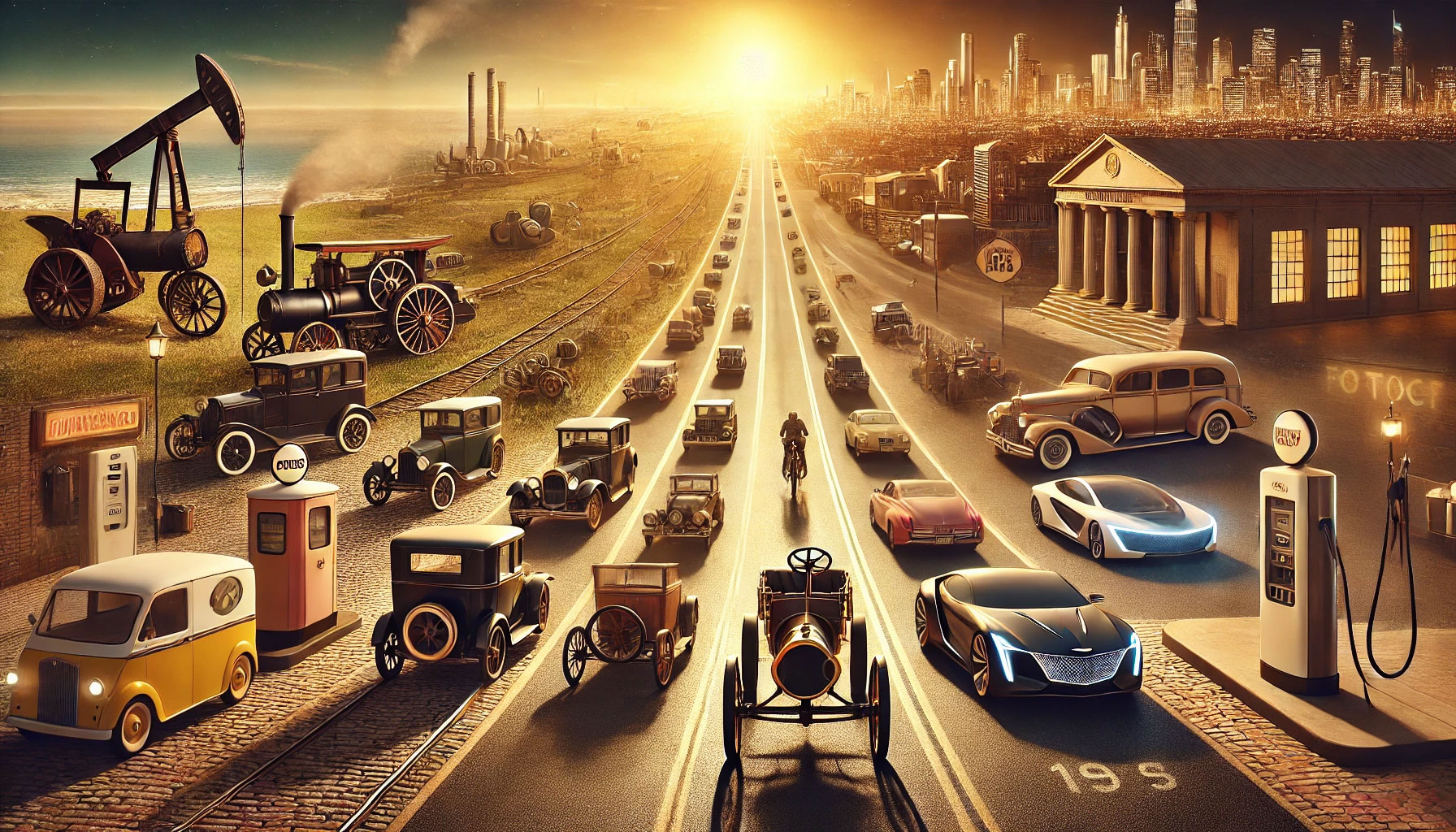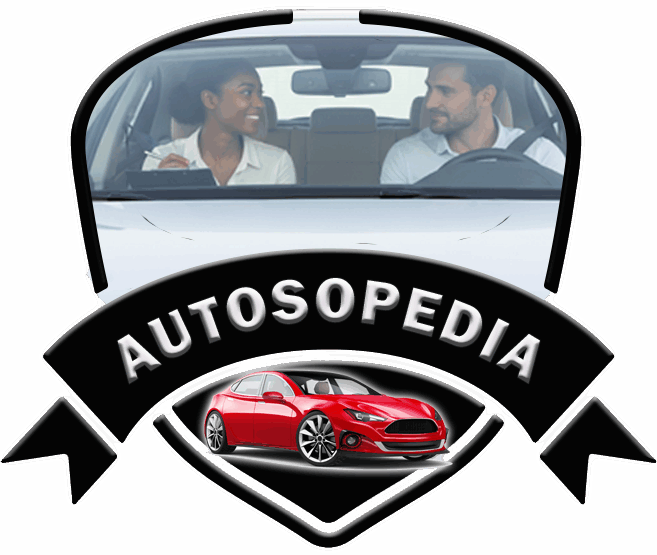automobile's Impact on Humanity

AutosOpedia Podcast - press play
Author: J H McIntosh
Milestones in the History of the Automobile
The history of the automobile is a story of innovation, engineering brilliance, and societal transformation. From its humble beginnings to its modern-day incarnations, the automobile has undergone radical changes, becoming a fundamental aspect of daily life. In this article, we will explore the key milestones in automotive history and highlight the profound positive impact these innovations have had on humanity.
Early Beginnings: The Steam Age (18th and 19th Centuries)

The first self-propelled vehicles predated the internal combustion engine by centuries, starting with steam power. In 1769, Nicolas-Joseph Cugnot, a French engineer, designed what is considered the first automobile—a steam-powered tricycle intended for military use. Cugnot’s invention may have been slow and impractical, but it laid the foundation for later innovations.
Impact: Cugnot’s steam vehicle signified the earliest effort toward mechanized personal transport, a major step in relieving humans and animals from physical labor associated with moving goods and people. It demonstrated that mechanization could free people from some of the burdens of transportation.
The Birth of the Internal Combustion Engine (Late 19th Century)

The next great leap in automotive development came with the invention of the internal combustion engine. In the 1870s, German engineers Nikolaus Otto, Gottlieb Daimler, and Carl Benz revolutionized personal transportation. Otto’s four-stroke engine became the standard, while Benz and Daimler created the first automobiles powered by gasoline engines.
In 1885, Karl Benz introduced the Benz Patent-Motorwagen, often considered the first practical automobile. It featured a single-cylinder, four-stroke engine mounted on a three-wheeled frame, capable of reaching speeds up to 10 mph. Just a few years later, Gottlieb Daimler created a more advanced four-wheeled vehicle with a petrol engine, setting the stage for future car designs.
Impact: The development of the internal combustion engine marked the transition from cumbersome steam vehicles to practical, personal transportation. This leap reduced transportation times and connected cities and towns, significantly advancing trade, communication, and social mobility.
Mass Production and the Model T (1908)

Perhaps the most defining moment in automotive history came in 1908 when Henry Ford introduced the Model T. The Model T wasn’t the first car, but it was the first affordable one, thanks to Ford’s innovative assembly line production techniques introduced in 1913. By producing vehicles on an assembly line, Ford dramatically reduced the cost of each car, making automobile ownership accessible to the middle class.
Impact: Ford’s mass production of the Model T brought personal transportation within reach of millions, forever altering the landscape of American life and beyond. By the 1920s, people could afford to live farther from work, and industries supporting automobiles—like steel, rubber, and oil—boomed. The automobile became a symbol of freedom and opportunity, leading to increased suburbanization and giving people unprecedented mobility.
The Development of Road Infrastructure (1920s–1950s)

The widespread adoption of automobiles in the early 20th century necessitated the development of better roads and highways. Initially, roads were rough, built mainly for horse-drawn carriages, and not designed to support automobiles. The Federal-Aid Road Act of 1916 was the first effort by the U.S. government to improve roads for automobiles. This led to the construction of paved highways and improved road networks across the United States.
Later, the Federal-Aid Highway Act of 1956, championed by President Dwight D. Eisenhower, resulted in the construction of the Interstate Highway System, which further expanded the infrastructure necessary to support the growing number of cars on the road.
Impact: The improvement of road infrastructure made travel faster, more efficient, and safer. It opened up new economic opportunities by connecting rural areas with cities and enabling the fast transport of goods and services. The interstate system in the U.S. played a major role in shaping the country’s economy, urbanization, and cultural development, fostering national unity and economic growth.
Safety Innovations: Seat Belts and Airbags (1950s–1980s)

As the number of vehicles on the road increased, so did the number of accidents, leading to a growing focus on automobile safety. The first seat belts were introduced in the 1950s by Volvo engineer Nils Bohlin, who designed the modern three-point seat belt that remains a standard in all vehicles today. In the 1970s, airbags followed, initially offered as an option on luxury cars before becoming mandatory in the 1980s.
The U.S. government also became involved, with the establishment of the National Highway Traffic Safety Administration (NHTSA) in 1970, which set federal standards for car safety, including crash testing and safety features.
Impact: Seat belts and airbags have saved countless lives since their introduction. These safety features, along with increased regulation, helped reduce the severity of traffic-related injuries and deaths. The focus on safety has continued to evolve, leading to modern advancements like crash avoidance technology and automated emergency braking systems.
The Oil Crisis and the Rise of Fuel Efficiency (1970s)

The 1973 oil crisis, caused by an oil embargo by OPEC, exposed the vulnerability of global economies reliant on gasoline-powered vehicles. Fuel prices skyrocketed, and car manufacturers were forced to rethink vehicle design. This crisis accelerated the development of fuel-efficient cars, as consumers began seeking alternatives to gas-guzzling vehicles.
Impact: The oil crisis fundamentally changed the way cars were designed, leading to the development of smaller, lighter, and more fuel-efficient vehicles. The crisis also sparked the development of alternative energy sources for automobiles, laying the groundwork for hybrid and electric vehicles. It also pushed governments to set higher fuel economy standards, which continue to evolve today.
The Electric Car Revolution: The Toyota Prius and Tesla (1990s–Present)

The advent of the electric and hybrid car represents one of the most significant milestones in the automotive industry. In 1997, Toyota introduced the Prius, the first mass-produced hybrid vehicle. It featured both a gasoline engine and an electric motor, offering better fuel economy and lower emissions than traditional gasoline-powered cars.
The electric car revolution gained further momentum in the 21st century, with Tesla launching its Model S in 2012, a fully electric luxury sedan with impressive performance and range. Tesla’s advancements in battery technology, autonomous driving, and vehicle software updates have pushed the boundaries of what electric vehicles (EVs) can achieve.
Impact: Hybrid and electric vehicles have reduced the automotive industry’s reliance on fossil fuels and lowered greenhouse gas emissions. These advancements have contributed to global efforts to combat climate change and reduce air pollution. Tesla’s rise has also encouraged traditional car manufacturers to invest in electric vehicle technology, accelerating the transition to a more sustainable transportation system.
Autonomous Driving and the Future of Mobility (2010s–Present)

The development of autonomous driving technology is poised to be the next major transformation in the automotive industry. Companies like Tesla, Google’s Waymo, and Uber have invested heavily in self-driving car technology. Autonomous vehicles use a combination of sensors, cameras, and artificial intelligence to navigate roads without human intervention.
While fully autonomous cars are not yet mainstream, many modern vehicles feature advanced driver-assistance systems (ADAS), such as lane-keeping assistance, adaptive cruise control, and automated emergency braking, which are stepping stones to full autonomy.
Impact: Autonomous vehicles promise to revolutionize transportation by improving safety, reducing accidents caused by human error, and making travel more efficient. They could also provide mobility solutions for the elderly, disabled, or those unable to drive. Moreover, autonomous cars have the potential to reshape urban planning, reduce traffic congestion, and transform how goods are transported, contributing to greater efficiency and sustainability in the global economy.
The Positive Impact of Automotive Innovation on Society

The milestones in automotive history have had a profound impact on human society, from increasing mobility and economic opportunities to improving safety and reducing environmental harm. Automobiles have changed the way people live and work, enabling faster communication, the expansion of suburban areas, and the growth of international trade.
The development of electric and hybrid vehicles, as well as autonomous driving technologies, represents the future of mobility, with the potential to significantly reduce the transportation sector’s carbon footprint and improve global access to transportation.
In addition, advancements in safety technology have made driving far less hazardous than it was a century ago. Today, the integration of artificial intelligence and machine learning into automotive technology is creating smarter, safer, and more efficient vehicles, paving the way for even greater innovations.
Conclusion

From the steam-powered carriages of the 18th century to the electric and autonomous vehicles of today, the history of the automobile is a testament to human ingenuity and the relentless pursuit of progress. Each milestone, whether it be the development of the internal combustion engine or the rise of autonomous driving, has left a lasting positive impact on society.
As the automotive industry continues to evolve, the focus on sustainability, safety, and technological innovation will shape the future of transportation. The automobile, which began as a luxury for the few, is now a crucial element of daily life for billions of people worldwide. It has connected communities, fueled economies, and transformed the way we experience the world. And as we look forward, the next chapters in automotive history promise even greater benefits for humanity.
Get in touch
DISCLAIMER:
Information is provided on an “as is” basis and could include technical, typographical or other errors. AutosOpedia makes no warranties, representations, or guarantees of any kind, express or implied, including but not limited to, accuracy, currency, or completeness, the operation of the Site, the information, materials, content, availability, and products. AutosOpedia reserves the right to change information at any time without incurring obligations of any kind whatsoever. Your local dealer is the best source of the most up-to-date information on any vehicles listed on AutosOpedia.
Please note the display of any name, image, or likeness of any individual, organization, vehicle model or item on this site must not be construed as an endorsement of this site by the owner of that which is depicted. Nor should the presence of the same be inferred by anyone as an indication the depicted is currently posting content or otherwise participating at this site in any way whatsoever. Additionally, we certainly will remove or replace any name, image, likeness, or item if requested to do so by the owner of the entity or item depicted. Please leave messages or requests in the Contact form above. Thank you!














